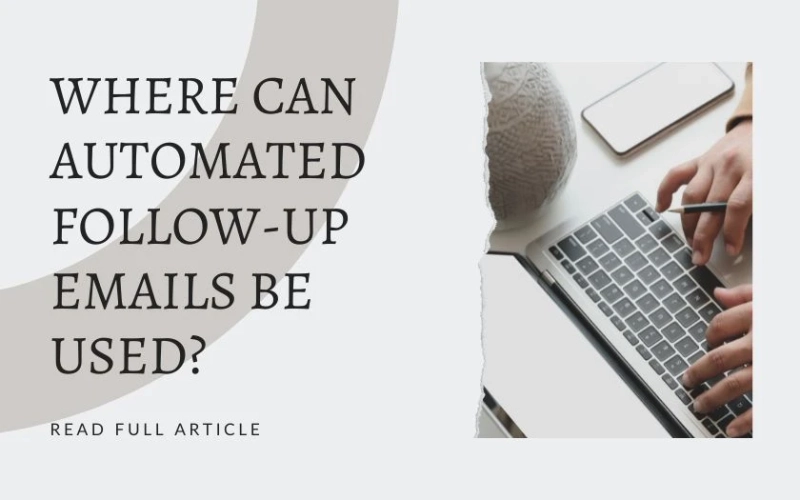Success in today's fast-paced corporate environment depends on efficient communication.
Follow-up emails that are automatically generated have become a potent tool for assuring timely and effective communication. These automated follow-ups can be used in a variety of sectors to improve productivity by integrating tools like Email Tracking and email-to-task conversion.
Marketing and Sales
Automatic Follow-Up Emails are essential for marketing and sales efforts. Follow-up emails might be planned after distributing the first offers or product details to keep leads interested and foster relationships.
Sales teams can see whether recipients have opened or clicked on links in emails by implementing email tracking. This information offers insightful feedback on levels of engagement and aids in customizing subsequent communication.
Additionally, sales professionals may easily generate tasks or reminders for upcoming actions by using email-to-task conversion, ensuring no chances are lost.
Customer Service
Timely replies and problem-solving are key components of effective customer assistance. To respond to support requests or acknowledge consumer inquiries, Automatic Follow-Up Emails might be used.
These emails can be sent out as soon as a ticket is received, giving clients peace of mind that their issues are being taken care of. Additionally, by including email monitoring, support personnel can determine whether consumers have opened the emails, enabling proactive follow-up and ensuring quick issue resolution. Customer service representatives may turn essential emails into doable tasks with the email-to-task conversion feature, ensuring that all client inquiries are handled properly.
Planning a project
Project management is considerably aided by automated follow-up emails since they improve accountability and communication.
Follow-up meetings can be planned by project managers to remind team members of unfinished work or project deadlines. Managers can monitor if team members have received and opened crucial emails connected to a project by including Email Tracking.
This function makes it possible to efficiently communicate project updates, deadlines, or any adjustments to the requirements. Project managers can also convert emails that are pertinent to their projects into tasks or action items using email-to-task conversion, which ensures efficient workflow management.
Building Relationships Through Networking
Follow-up that is prompt and persistent is essential for networking and relationship-building initiatives. Professionals can stay in touch with new clients, partners, or industry colleagues by using automatic follow-up emails. You can thank people, give resources, or ask for more meetings in these emails. Individuals can improve their networking efforts by using email tracking, which allows them to assess the level of interest and involvement from receivers. Additionally, users may turn promising discussions into doable tasks using the email-to-task conversion function, ensuring that follow-up activities are effortlessly incorporated into their workflow.
Conclusion
Automated follow-up emails are adaptable tools that can greatly improve communication effectiveness in a variety of contexts. Professionals may improve workflows, foster relationships, and boost productivity by integrating tools like email monitoring and Email-to-Task conversion.
Organizations can maximize their potential and succeed more in today's fast-paced business environment by utilizing automation's capabilities.


